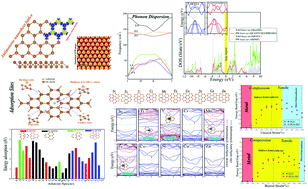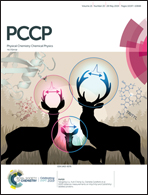Tuning the electronic and magnetic properties of antimonene nanosheets via point defects and external fields: first-principles calculations†
Abstract
Defects are inevitably present in materials, and their existence in a material strongly affects its fundamental physical properties. We have systematically investigated the effects of surface adsorption, substitutional impurities, defect engineering, an electric field and strain engineering on the structural, electronic and magnetic properties of antimonene nanosheets, using spin-polarized density functional calculations based on first-principles. The adsorption or substitution of atoms can locally modify the atomic and electronic structures as well as induce a variety of electronic behaviors including metal, half-metal, ferromagnetic metal, dilute magnetic semiconductor and spin-glass semiconductor. Our calculations show that the presence of typical defects (vacancies and Stone–Wales defect) in antimonene affects the geometrical symmetry as well as the band gap in the electronic band structure and induces magnetism to antimonene. Moreover, by applying an external electric field and strain (uniaxial and biaxial), the electronic structure of antimonene can be easily modified. The calculation results presented in this paper provide a fundamental insight into the tunable nature of the electronic properties of antimonene, supporting its promise for use in future applications.



 Please wait while we load your content...
Please wait while we load your content...